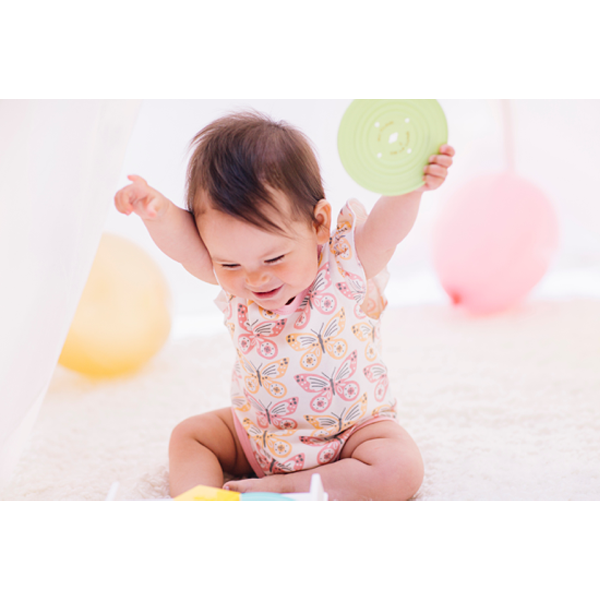
How to Take Cute Pictures of Baby
All moms love taking pictures of their baby throughout the day to document those special moments. Having camera phones makes it so easy to snap a photo right away so you don’t miss capturing baby’s first smile! So how do you use your phone to take a professional quality baby picture? It’s not always easy but there are several tips you can practice to get the perfect snapshot for your baby’s memory book or DIY baby’s first photoshoot without spending money on a photographer. Here’s how:
1. Wardrobe
Sometimes the key to getting a professional looking photo is simply dressing your baby in a beautiful outfit. A simple onesie is cute for your everyday photo, but for a special photoshoot you’ll want to dress baby in something with an eye-catching design and bright colors. An important thing to consider is making sure that whatever outfit you choose is super comfy – dressing baby in a stiff suit or starchy dress will not guarantee a quality photo. Try baby apparel made from bamboo fabric that is silky soft to the touch – like Silkberry Baby!

2. Timing
Timing is another important element to getting a great photo. The easiest thing to do is take a sleeping baby picture because you can pose baby however you like! But if you prefer baby to be awake for the photo, try to plan the photo session after baby takes a nap so she will be well-rested and in a happy mood.
3. Use props
Professional photographers typically bring props to a photoshoot to add an interesting element to the pictures. You can even try creating a makeshift backdrop or just hang up a plain white sheet and then have baby in a colorful outfit. Including toys as part of the picture is also very helpful because it will keep baby entertained and smiling, especially if you or someone else can hold a toy next to the camera to get baby to look straight at the camera.
4. Posing
Since small babies cannot move much on their own, they can’t do a ton of poses just yet. Having baby sitting or lying on a blanket is a great start. You can take some shots of baby tummy down first and then have baby lie on her back and see if you can get a shot of her reaching for her toes. If your baby is older and has started to imitate you, try making some funny faces, sticking out your tongue, or playing peek-a-boo and see if your baby will play along!
5. Lighting
Good lighting can make a huge difference in your photo quality. If the weather is nice, aim for an outdoor photoshoot with lots of natural lighting. If the photoshoot is indoors, try to bring around some extra lamps for more lighting, but nothing too bright that will bother the baby. You also want to avoid using the flash on your camera which can scare your baby and hurt her eyes.
6. Get up close
You don’t want to get a picture that is too far away or you will lose the details. Get close and stoop down to baby’s level or lie on the ground for an eye-level shot. You’ll also have a better chance at getting a picture where baby looks straight at the camera. Don’t be afraid to try a bunch of different angles, even if you end up looking silly.

Written by Carrie Shan, Founder of Silkberry Baby
Silkberry Baby is an organic baby clothing brand located in Vancouver, British Columbia, Canada. Developed by Carrie Shan, a mother of two young children, the range was conceived to create a baby bedding and clothing product range as her daughter had an allergic reaction to synthetic fibres. After much research, she sourced natural, eco-friendly and sustainable fibers (mulberry silk floss and bamboo) that she found to be the best natural choices available for baby and toddlers' bedding and clothing.
All data and information provided on this site is for informational purposes only. Silkberry Baby makes no representations as to accuracy, completeness, current-ness, suitability, or validity of any information on this site and will not be liable for any errors, omissions, or delays in this information, or any losses, injuries, or damages arising from its display or use. All information is provided on an as-is basis.
